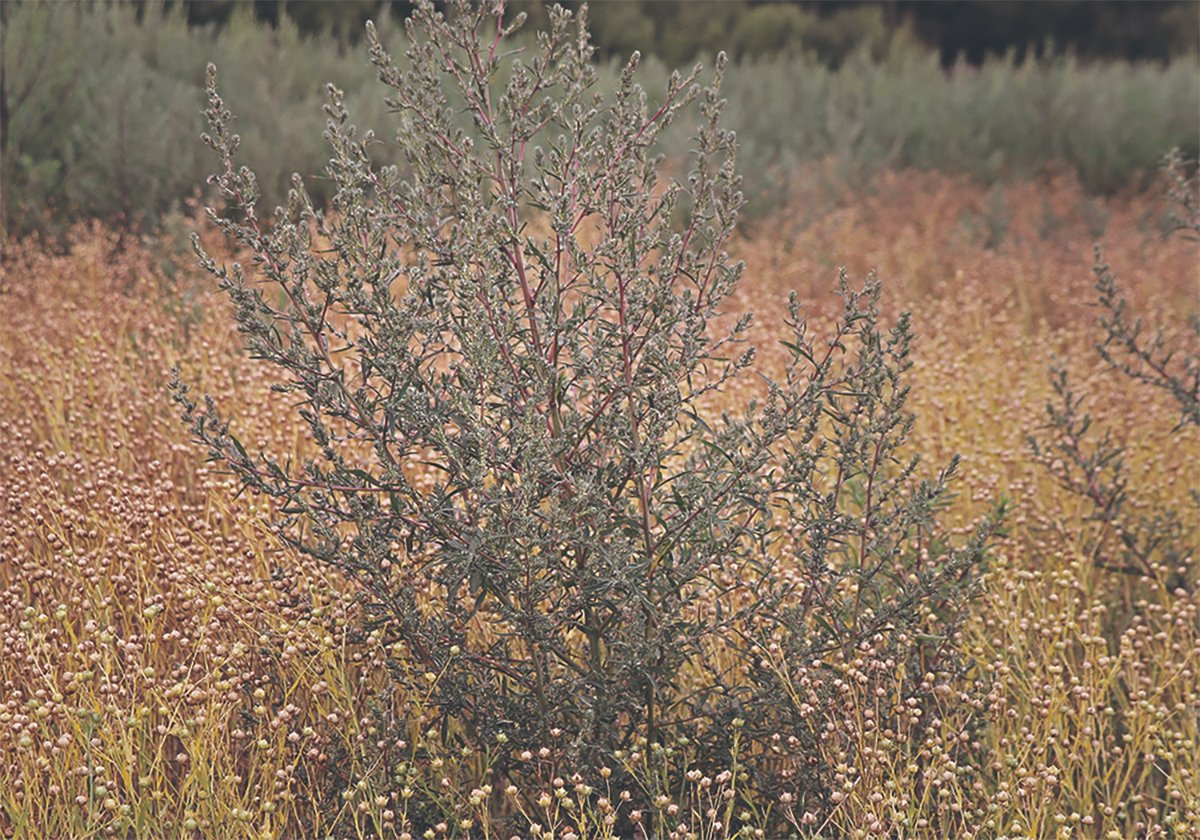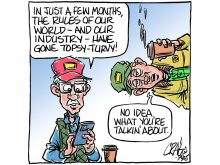It’s never a good idea to count your chickens before they hatch — or in the case of grain farmers, seeds before they’re in the bin — but it looks like a bumper crop might be on the way.
Lots of growing season remains, obviously, but the harvest outlook is brighter than it’s been in years.
Yet a dark cloud looms over the Prairie countryside, and it doesn’t contain hail. The countdown toward a potential strike affecting both national railways continues, and farmers are understandably getting nervous.
Read Also

Kochia has become a significant problem for Prairie farmers
As you travel through southern Saskatchewan and Alberta, particularly in areas challenged by dry growing conditions, the magnitude of the kochia problem is easy to see.
The industry has been through labour disputes before, but the sheer magnitude of this potential action has amplified the threat considerably.
Collective bargaining agreements between Canadian National Railway, Canadian Pacific Kansas City and certain sectors of their workers expired at the same time this spring and negotiations have gone nowhere.
Workers at CN and CPKC had voted to authorize strike action May 1, putting them in a legal strike position May 22.
However, the federal government stepped in May 19 and asked the Canada Industrial Relations Board (CIRB) to determine whether a work stoppage would threaten public safety, such as propane shipments to hospitals and movement of goods to remote northern communities.
No labour disruption is allowed during this process, but the board is expected to release its report no later than Aug. 9. It’s unclear what the board will decide and what it will mean for the labour dispute, but most expect that it will restart the clock toward potential disruption.
Unionized members at both railways have already re-authorized a strike — 98.4 per cent at CN and 88.6 per cent at CPKC — so the storm clouds on the horizon are increasingly forbidding.
A strike at just one railway is bad enough, but both at the same time could be catastrophic.
When a major port such as Vancouver is shut down by a labour disruption, the railways are often able to find other routes to market. None of those options would be available this time.
Prairie farmers are looking at a potential bumper crop, which is much-needed after poor harvests in recent years and this year’s lower grain prices.
For this to pay off for farmers, the crop has to be moved to market. It would be devastating if that movement came to a grinding halt just as good yields were being harvested.
Then there’s the humanitarian considerations.
The International Grains Council recently said it expects global stocks to fall to a 10-year low, while consumption is set to rise.
In other words, the world needs our grain now more than ever.
What has to happen to avoid this train wreck?
Back-to-work legislation is one option, but the federal Liberals have been reluctant in the past to take such action.
They did order the CIRB review in May, which put the strike threat on hold, but whether the government would actually legislate striking employees back to work is another matter.
In a statement last week, the Agricultural Producers Association of Saskatchewan called on federal departments, including Agriculture Canada and Transport Canada, to work together to prevent a labour disruption.
It’s unclear what the federal government can do on this front, but it should take whatever action is prudent.
The obvious solution, of course, is for the railways and the union to hammer out their differences and sign new collective bargaining agreements.
It may seem unrealistic, considering how long negotiations have been stalled, but it’s one of the remaining hopes.
The crop is advancing and there’s little time left to waste. Saner heads must prevail.
Karen Briere, Bruce Dyck, Barb Glen, Michael Robin, Robin Booker and Laura Rance collaborate in the writing of Western Producer editorials.

















